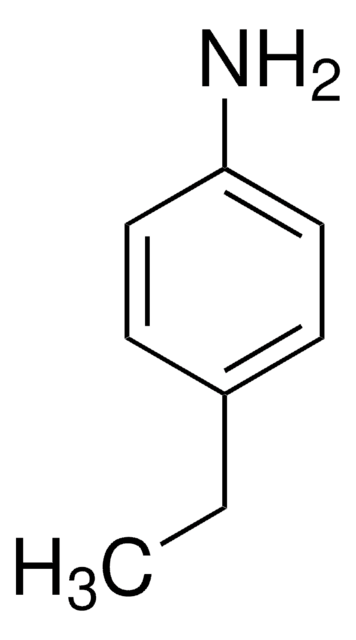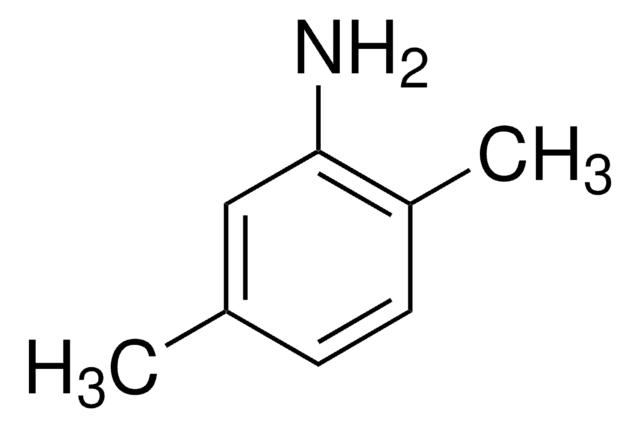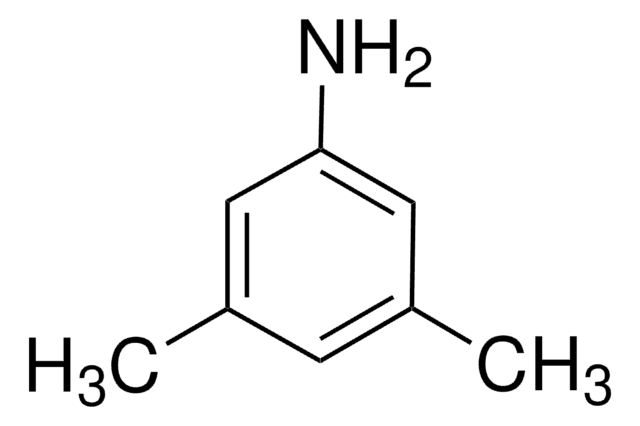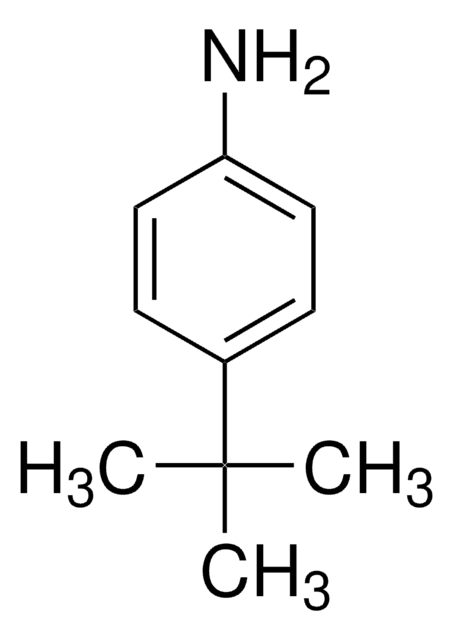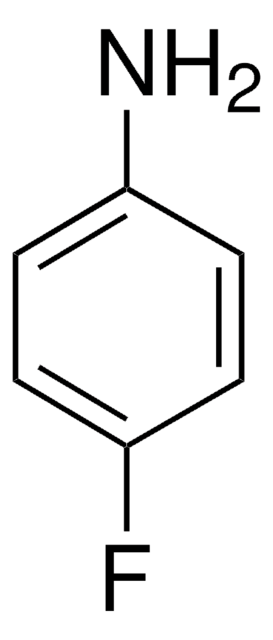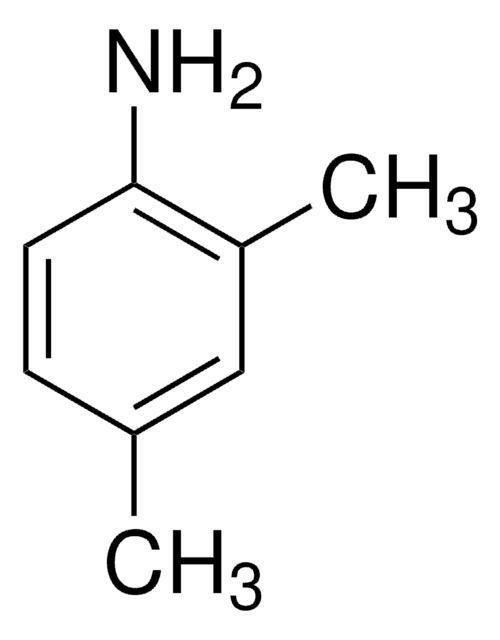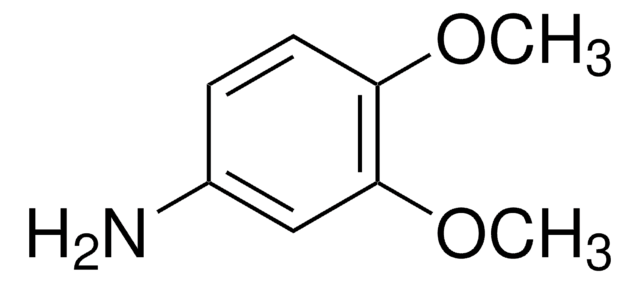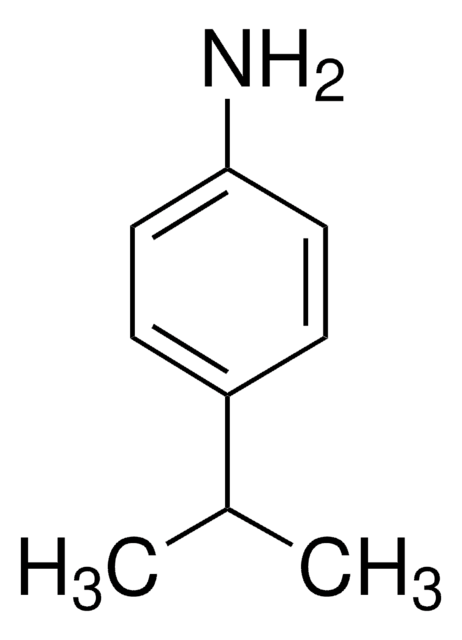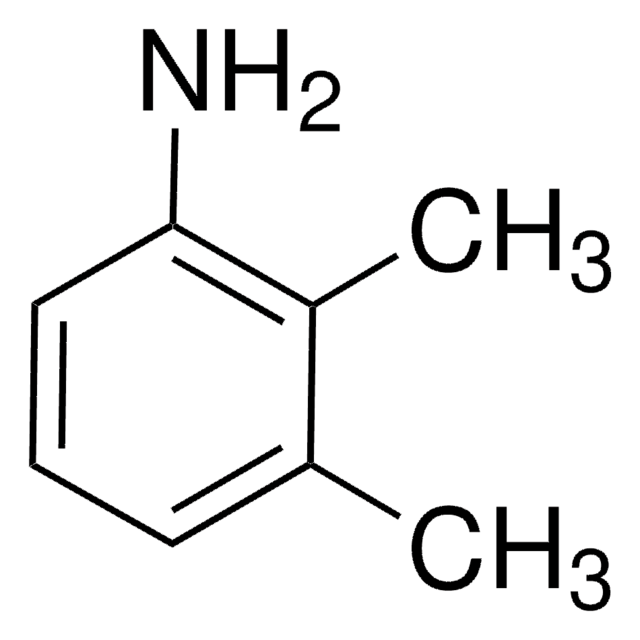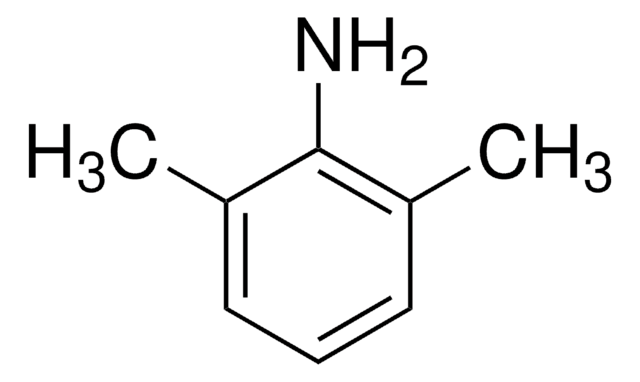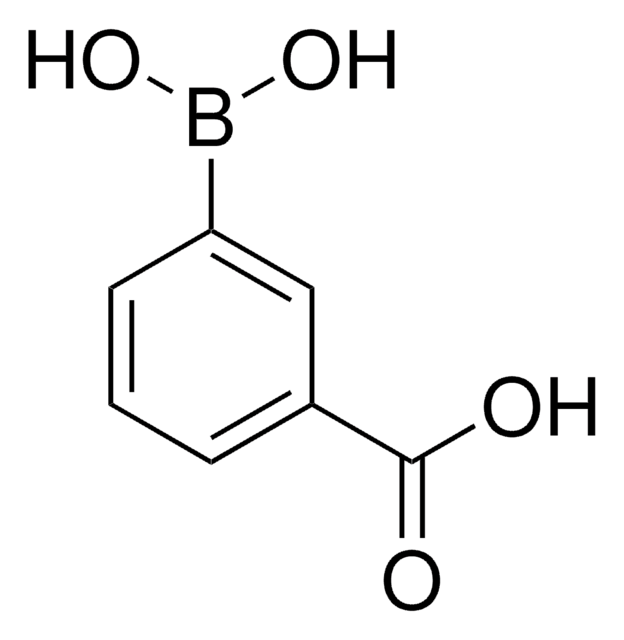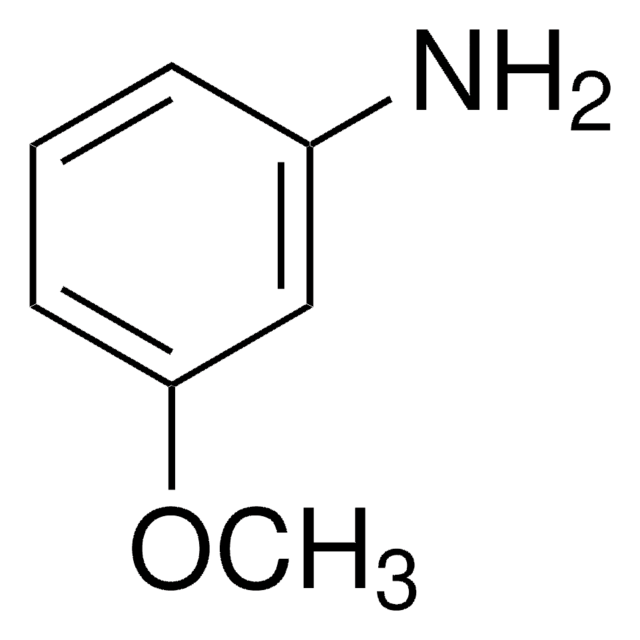Kluczowe dokumenty
126373
3,4-Dimethylaniline
98%
Synonim(y):
3,4-Xylidine, 4-Amino-1,2-dimethylbenzene, 4-Amino-o-xylene
About This Item
Polecane produkty
Poziom jakości
Próba
98%
bp
226 °C (lit.)
mp
49-51 °C (lit.)
rozpuszczalność
H2O: slightly soluble
alcohol: soluble
ciąg SMILES
Cc1ccc(N)cc1C
InChI
1S/C8H11N/c1-6-3-4-8(9)5-7(6)2/h3-5H,9H2,1-2H3
Klucz InChI
DOLQYFPDPKPQSS-UHFFFAOYSA-N
Szukasz podobnych produktów? Odwiedź Przewodnik dotyczący porównywania produktów
Powiązane kategorie
Zastosowanie
Hasło ostrzegawcze
Danger
Zwroty wskazujące rodzaj zagrożenia
Zwroty wskazujące środki ostrożności
Klasyfikacja zagrożeń
Acute Tox. 3 Dermal - Acute Tox. 3 Inhalation - Acute Tox. 3 Oral - Aquatic Chronic 2 - STOT RE 2
Kod klasy składowania
6.1A - Combustible acute toxic Cat. 1 and 2 / very toxic hazardous materials
Klasa zagrożenia wodnego (WGK)
WGK 3
Temperatura zapłonu (°F)
224.6 °F - closed cup
Temperatura zapłonu (°C)
107 °C - closed cup
Środki ochrony indywidualnej
dust mask type N95 (US), Eyeshields, Faceshields, Gloves, type P2 (EN 143) respirator cartridges
Wybierz jedną z najnowszych wersji:
Masz już ten produkt?
Dokumenty związane z niedawno zakupionymi produktami zostały zamieszczone w Bibliotece dokumentów.
Klienci oglądali również te produkty
Nasz zespół naukowców ma doświadczenie we wszystkich obszarach badań, w tym w naukach przyrodniczych, materiałoznawstwie, syntezie chemicznej, chromatografii, analityce i wielu innych dziedzinach.
Skontaktuj się z zespołem ds. pomocy technicznej